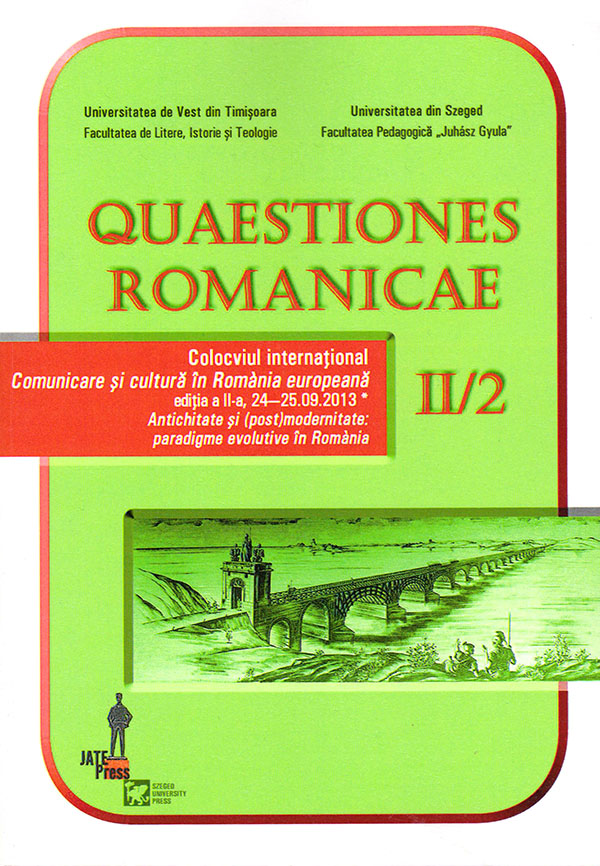Quelqu’un entre identité et quantité, aperçu diachronique
Abstract: (Quelqu'un between identity and quantity. Diachronic approach) Within the broad theme of synchronic and diachronic relations between latinity and romanity, we present a statistical study of the evolution of a French structure, uncommon today, but having an interesting functioning. It is the sequence quelqu’un des N, corresponding to a partitive structure of the un des N type, which often references inanimate entities (quelqu’un des étages supérieurs du château, quelqu’une de ces villes, where the quelqu’un part is interpreted as a numeral, like un quelconque des N, and – this being our hypothesis - only has a formal relation with the undefined pronoun quelqu’un, which references a person of undetermined identity. This structure derives its originality from the parallelism it has with the epistemic determinant "of ignorance" quelque : just like this determinant, the analyzed structure is used in modalized contexts to refer to a non-specific reference, because not factual. The aim of this paper is to provide statistical evidence of the structure’s regressing use. Studied in the textual database Frantext between 1500 and 2000, its operation reinforces the idea that, when new forms are the result of grammaticalization, those which are the source and which don’t disappear do not necessarily have stylistic effects associated with older forms of the language.
Keywords: « quelque », « quelqu’un », indefinite pronouns, partitive structure, undefined determinant.
Résumé : Dans la thématique large des rapports synchronique et diachronique entre la latinité et la romanité, nous présenterons une étude statistique sur l’évolution d’une structure du français, rare aujourd’hui, mais qui interpelle par son fonctionnement. Il s’agit de la séquence quelqu’un des N, qui correspond à une structure partitive du type un des N et qui réfère souvent à des inanimés (quelqu’un des étages supérieurs du château, quelqu’une de ces villes où la tête quelqu’un s’interprète numériquement, comme un quelconque des N, et n’a, c’est notre hypothèse, qu’un rapport formel avec le pronom indéfini quelqu’un qui renvoie à un individu humain à identité indéterminée. Cette structure tire toute son originalité du parallélisme qu’elle entretient avec le déterminant épistémique « de l’ignorance » quelque : tout comme ce déterminant, la structure observée s’utilise dans des contextes modalisés pour renvoyer à un référent non spécifique, parce que non factuel. L’objectif de cette communication est d’apporter une preuve statistique à l’emploi de cette structure, en voie de régression. Observée dans la base textuelle Frantext entre 1500 et 2013, son fonctionnement renforce l’idée que, lorsque de nouvelles formes sont issues de la grammaticalisation, celles qui en sont la source et qui ne disparaissent pas n’ont pas obligatoirement les effets stylistiques associés aux formes vieillies de la langue.
Mots clés : « quelque », « quelqu’un », pronoms indéfinis, structure partitive, déterminant indéfini.
